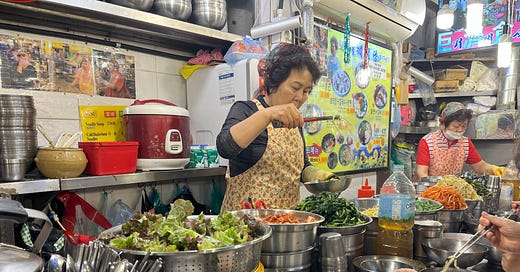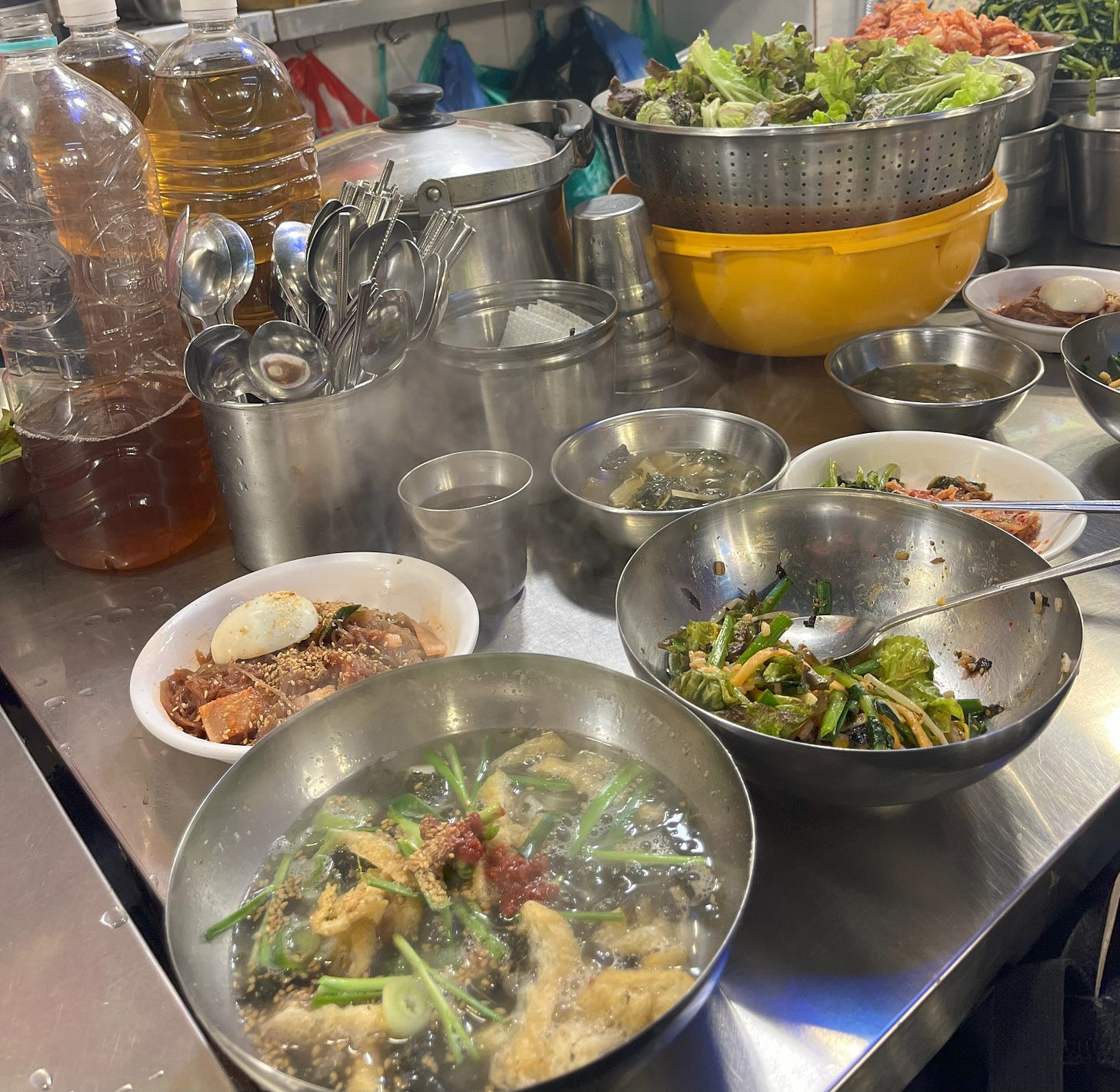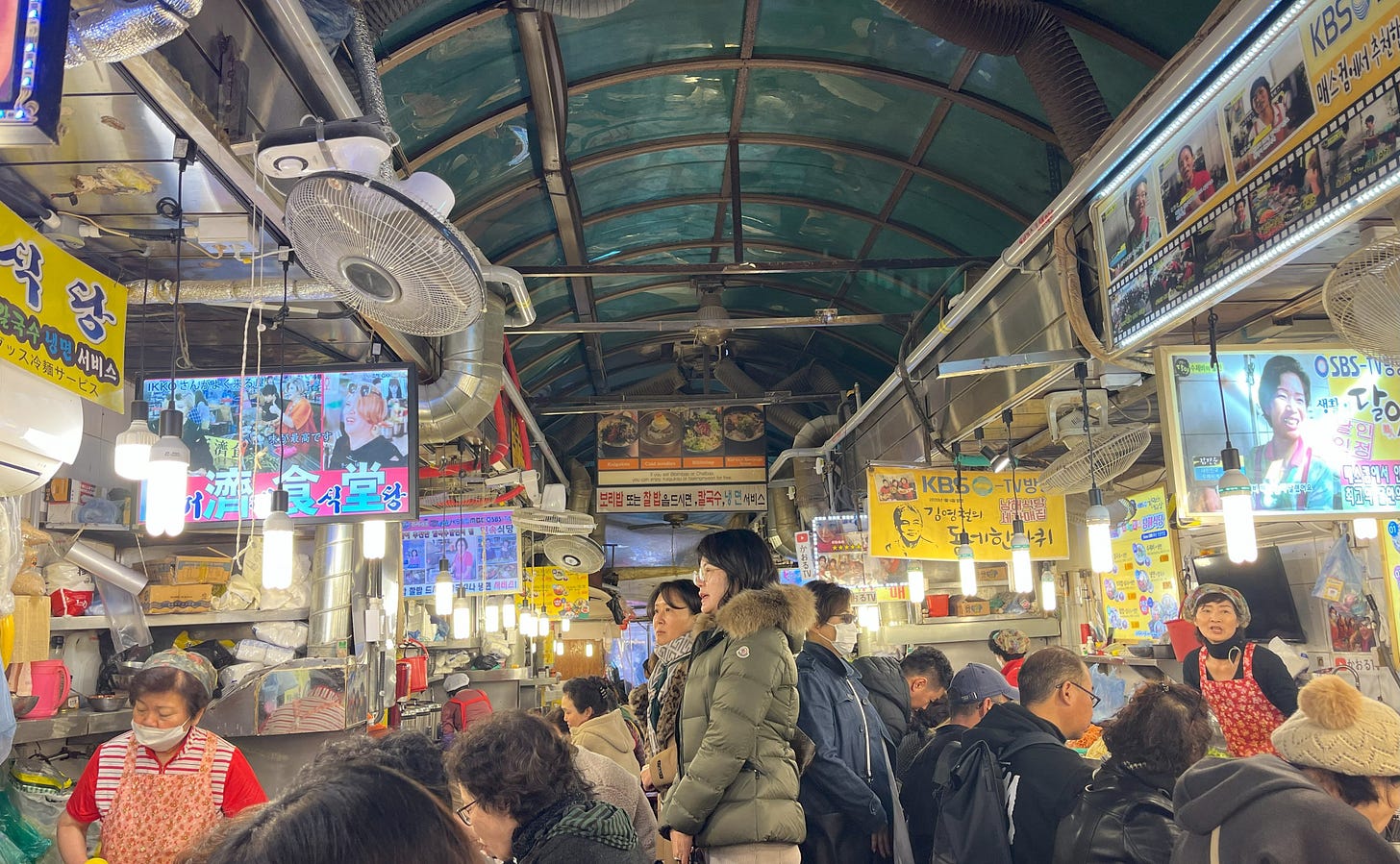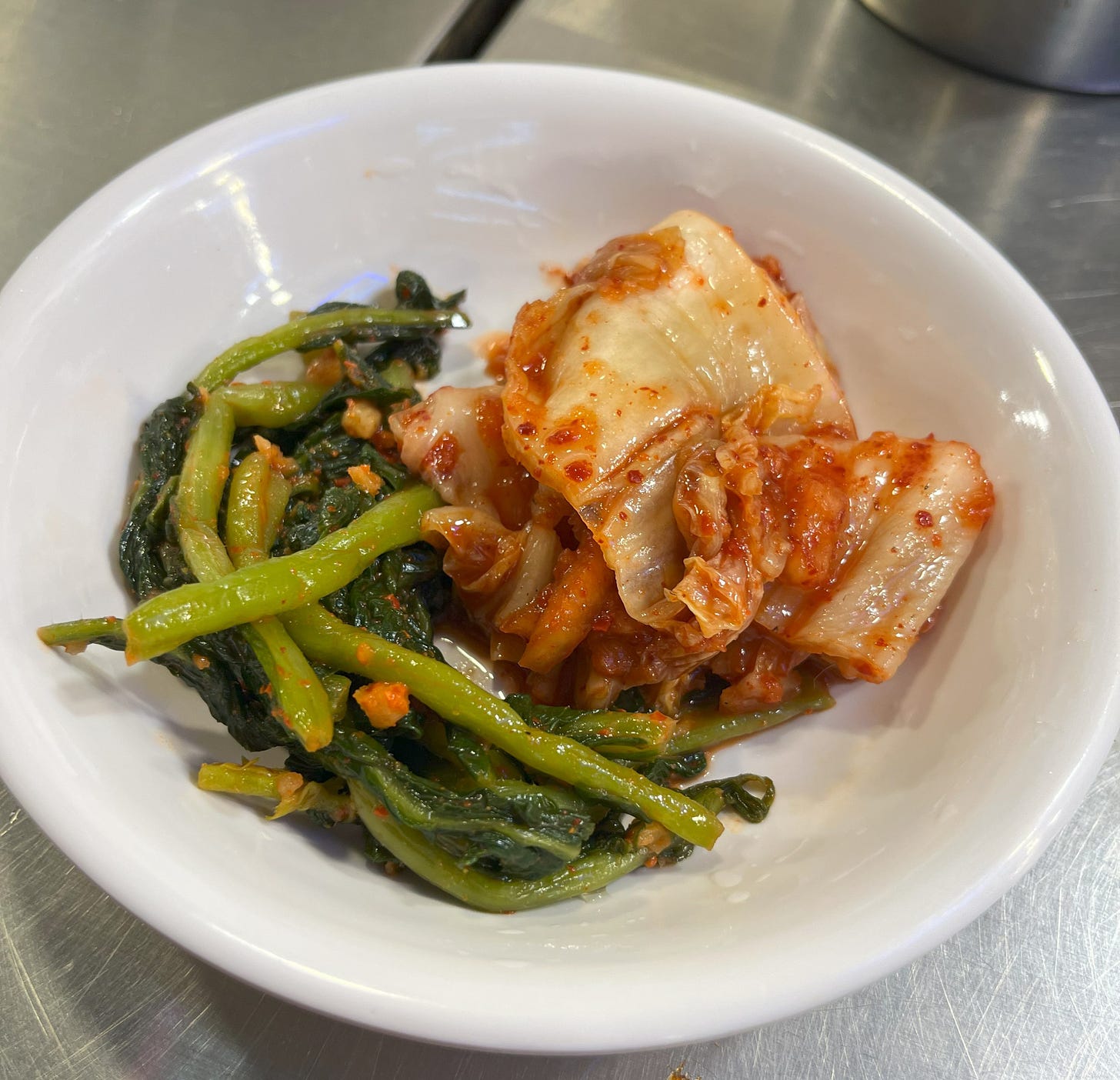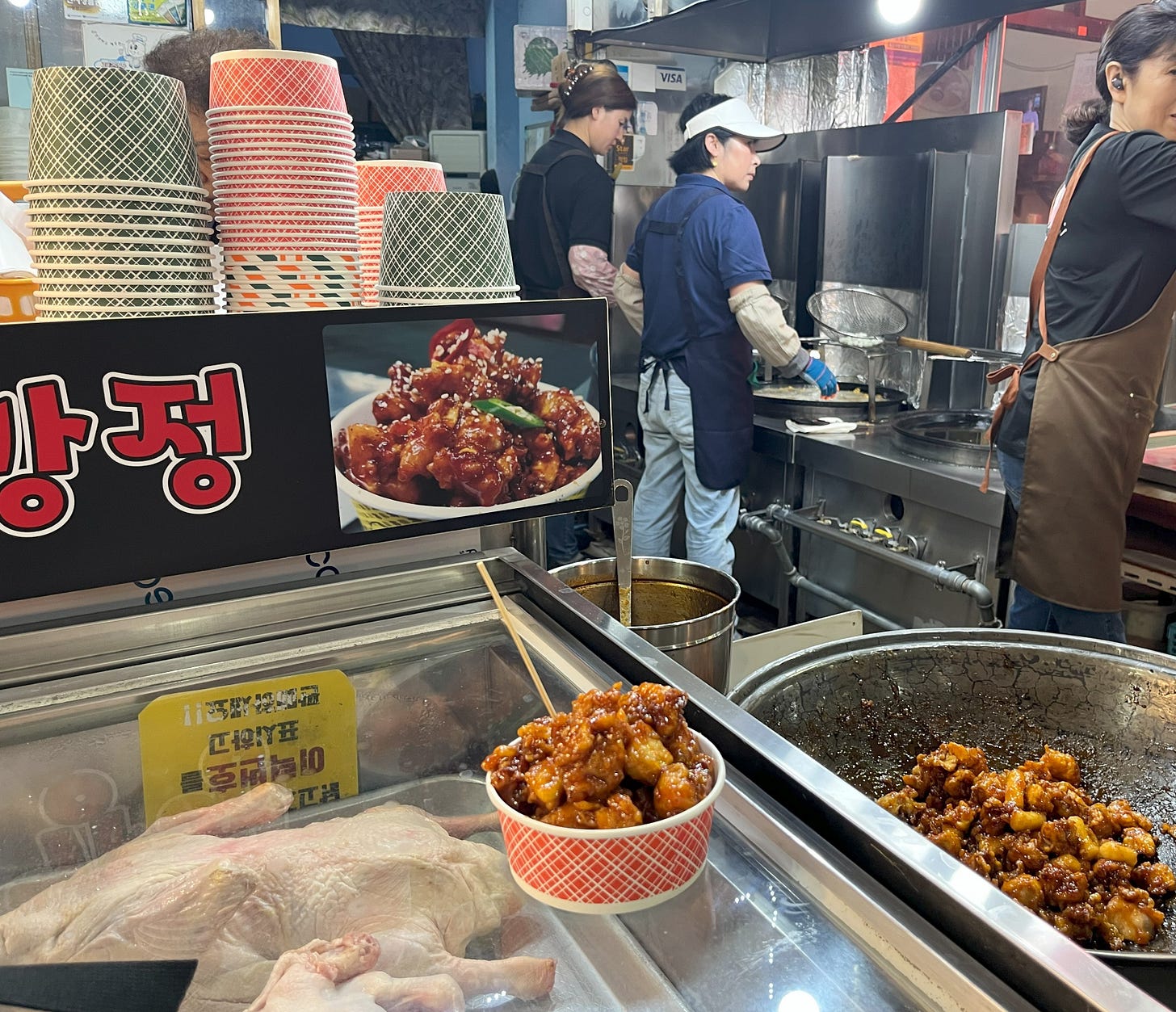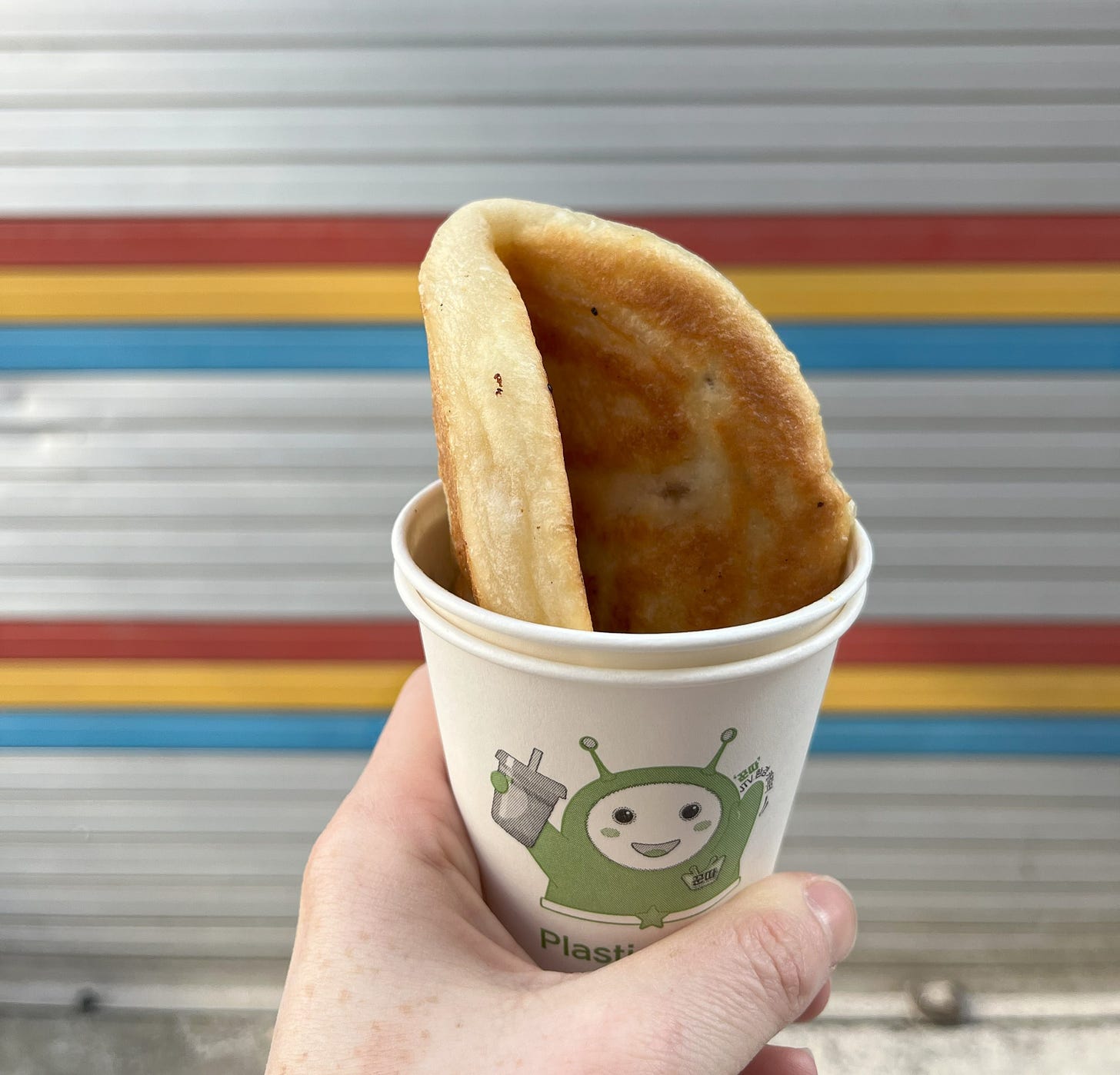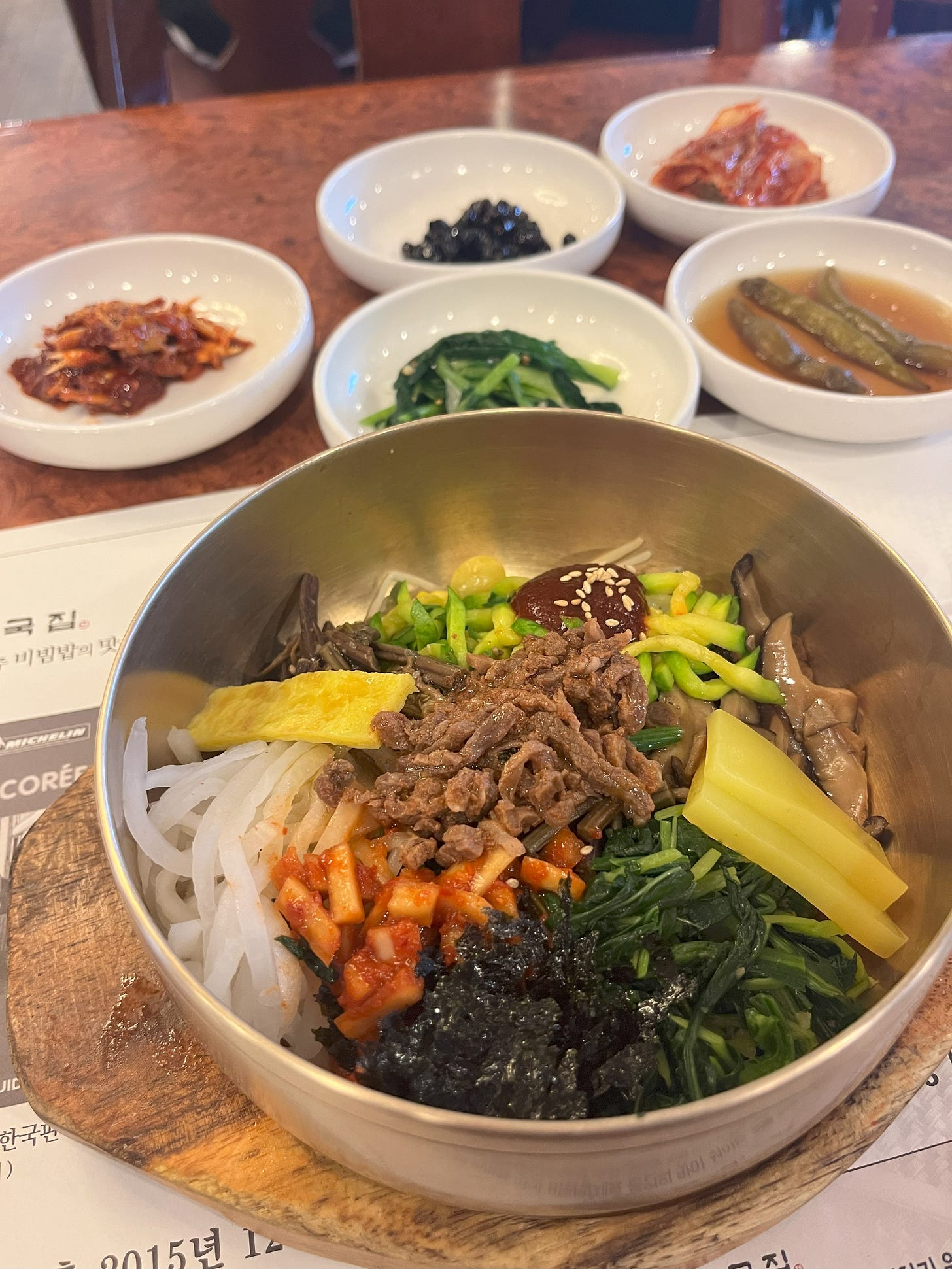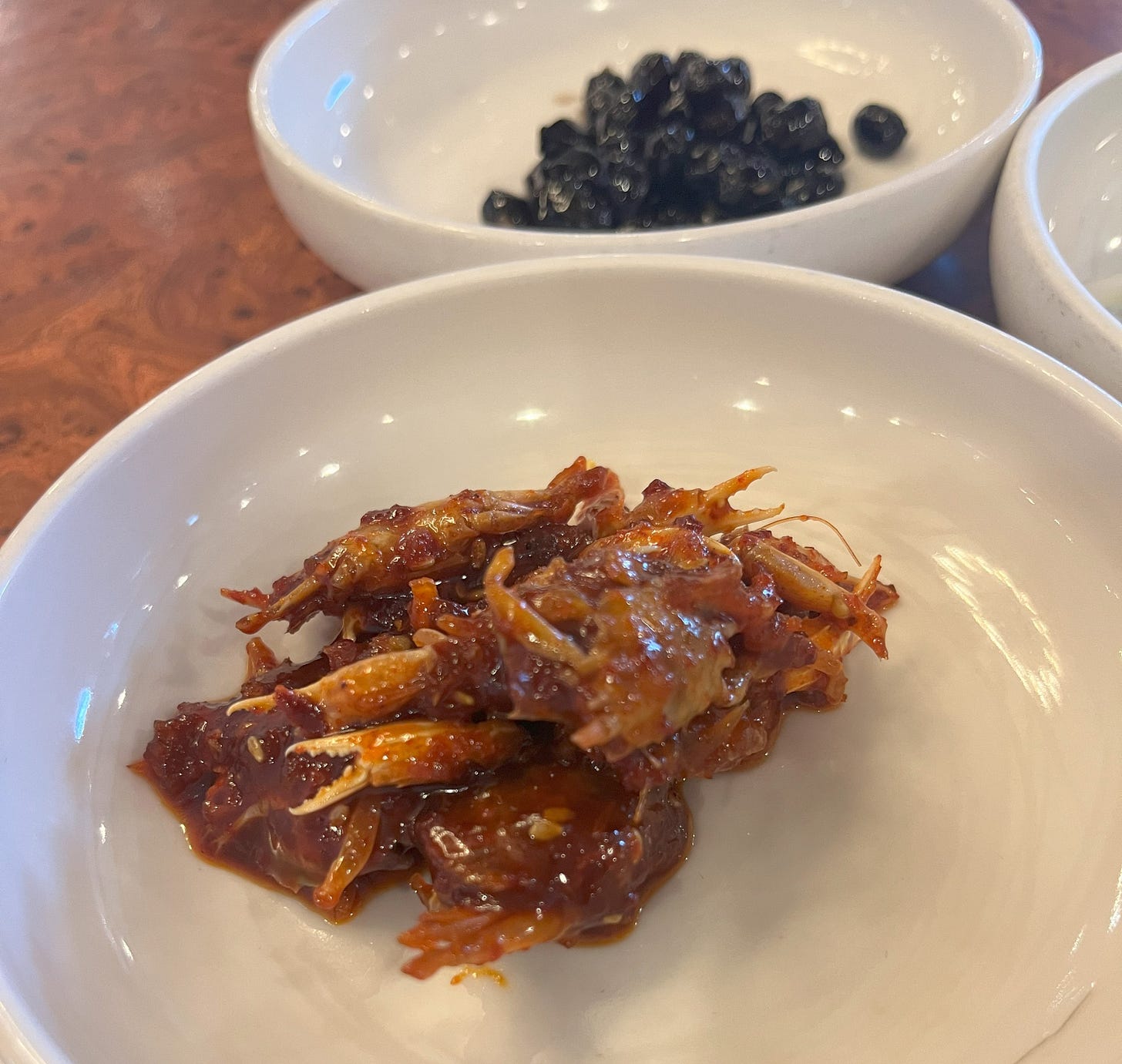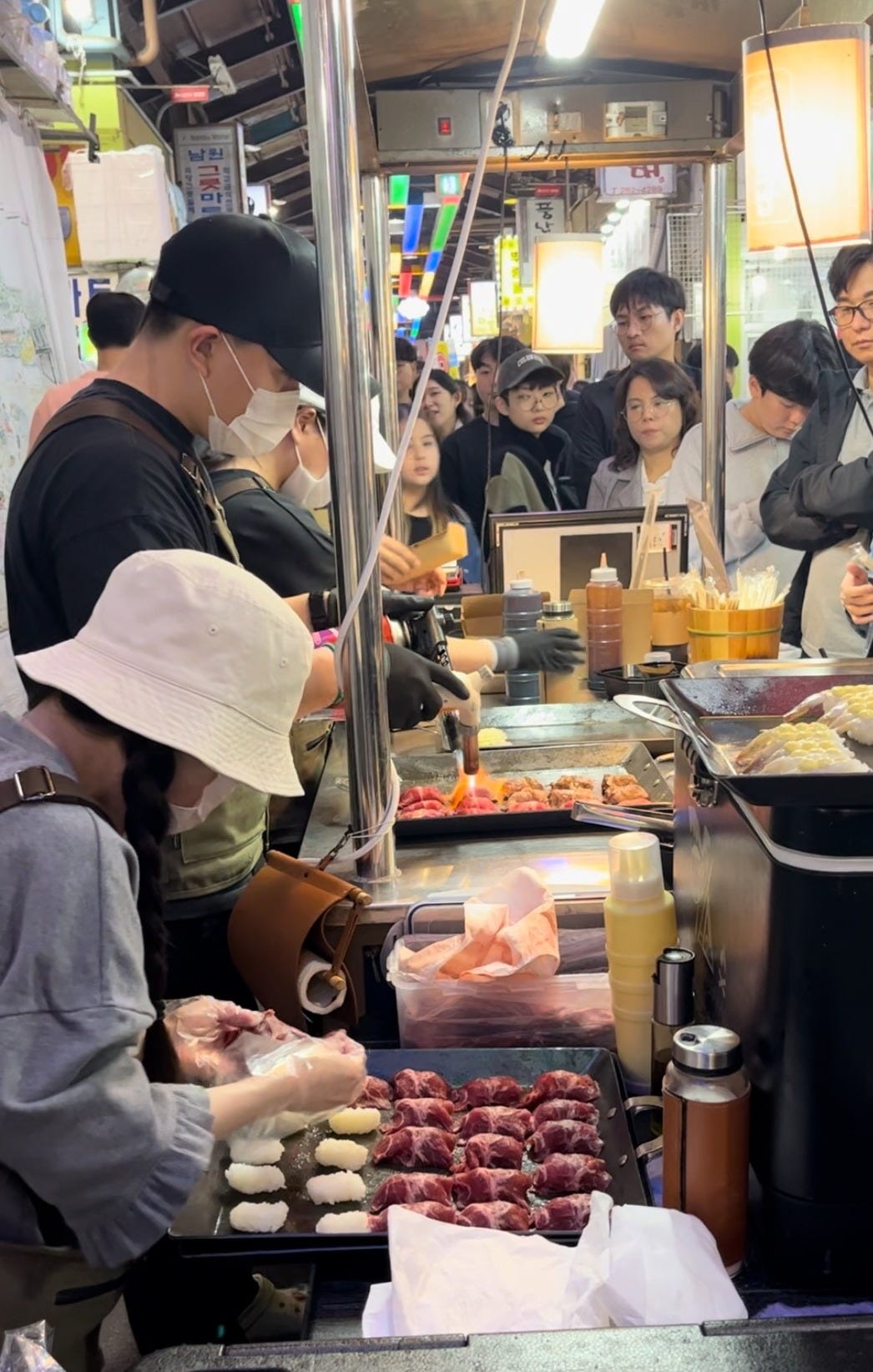The portal to noodle alley is a doorframe with plastic strip curtains, like those you used to push past at the local butcher’s. It took us ages to find it. Namdaemun Market is Korea’s biggest and we got sent in different directions through a warren of kitchen utensils, fake designer clothes, slippers and tat.
Inside, it’s the steam that hits us first. Then the person behind tapping our backs to get in as somebody else squeezes past. Like most things in this country, lunch is best optimised and to be enjoyed efficiently.
There are two rows lined with tiny, backless stools. Giant bowls of chopped vegetables make it hard to differentiate where one vendor ends and the other starts, but it doesn’t matter because they all have the same menu. Each is manned by middle-aged women with aprons and immaculate perms, calling out to us as we make our way down. Known as ajummas, these street food ladies fuel the nation’s stomachs and are my favourite part of Korean food culture.
We find a space between elbows and bags and take a seat.
“Vegetarian?” Task asks, hopeful. It’s been difficult to find her a meat-free meal.
The woman nods, her face breaking into a smile. I make a V and point at the sign above her head.
“Two please.”
Within seconds we’re handed bowl after bowl of rice, cold noodle salad, soup, green vegetables and the indispensable kimchi, fermented witchcraft that is ubiquitous yet always unique. This one has such a tang that I half expect it to crawl off the plate, propelled by the strength of its good bacteria.
“That’s the best kimchi I’ve ever had,” I say, for the eighth time that week.
Our kal-guksu, our knife cut noodles, come in a broth that’s still bubbling. Tash dunks her spoon in and pulls up a slither of something grey.
“I’ve found an entire fish,” she states.
I press my lips together and try not to giggle as she inspects it closely. She shrugs and then downs it in one. This is the closest we’ve got to a vegetarian lunch since she joined in me in Seoul; a certain flexibility has been necessary.
The person next to me tuts, most likely for taking up too much space, even though I don’t have any. The ajummas work at pace, rolling and cutting dough, filling bowls, swapping change, yet still finding the time to smile and nod at their honorary tourists, pouring us cups of piss-coloured tea. There is slurping, clattering, chatting, so many people in this fire hazard of an alley, all pilgrims for the perfect noodles. Here for a broth with comforting depth.
Food is clearly of enormous importance in Korea and always an experience. It’s rare to spend weeks in a place without having a bad meal, which was the case. Here is a non-exhaustive list of some excellent things I ate.
Korean fried chicken
World-famous and rightly so, it’s the double fry and spicy sauces that had me licking my fingers.
Another thing I loved about Korean food culture is that most eateries only do one thing, and one thing really well. Fried chicken and beer joints offer few variations in flavours, with or without the bone. Simply press a button on your table for a refill.
Mandu
It was ignorant of me, but I wasn’t expecting to eat so many dumplings in Korea. They are what you’d expect from other dumplings in the region, often with a kimchi twist. I ate them in excess, steamed, fried and boiled.
Hotteok
These stuffed pancakes are a very common street snack. The batter is chewy and dense and the inside is usually a molten sugar syrup with nuts and seeds. A suitable finish to breakfast, lunch and dinner.
Pajeon
Another pancake Tash and I loved was pajeon, which is a mix of wheat and rice flours with spring onions. Sounds unappetising, looks unappetising, but a genuine winner.
Bibimbap
Another famous export and art topped on warm rice. Bibimbap is a bowl of textures and colours, usually finished with a fried egg. To be mixed all together and spooned down swiftly.
Korean BBQ
I fell in love with Korean BBQ so madly that I wrote an entire piece about it here. Poems, plays, novels are to follow.
Things cooked with flames
In every food market I went to, there was always someone playing with a blowtorch. Flames are taken very seriously, and fun to watch too.
Tteok-bokki
I will probably offend people when I say that I did not like this stewed rice cake in a fiery, gloopy sauce, as it’s a street food staple. It has to be tried but if your spice tolerance is low, you have been warned.
Banana milk
Breakfast in the Western sense is hard to come by as a tourist, as most people seem to eat it in their homes. There’s a fantastic coffee culture in Korea, but cafes usually aren’t open until 10am. These milks, originally 1970s government propaganda, have that nostalgic, artificial banana flavour and were the start to each day.
Stamps of approval
Namdaemun Market is less touristy than Gwangjang market, and we ate better too. Gwangjang whilst impressive, has suffered from the Netflix effect.
There’s a world-famous fish market run by ajummas in Busan, which I wrote about here. I was not, however, brave enough to eat anything from a tank.
Michelle Zauner has written a brilliant memoir which is an entire love letter to her mother and Korean food. Myself and Obama recommend it. I enjoyed Han Kang’s book The Vegetarian less, but it gives you an idea of how all-pervasive meat-eating is in Korea.
I can leave addresses and recommendations in the comments!

